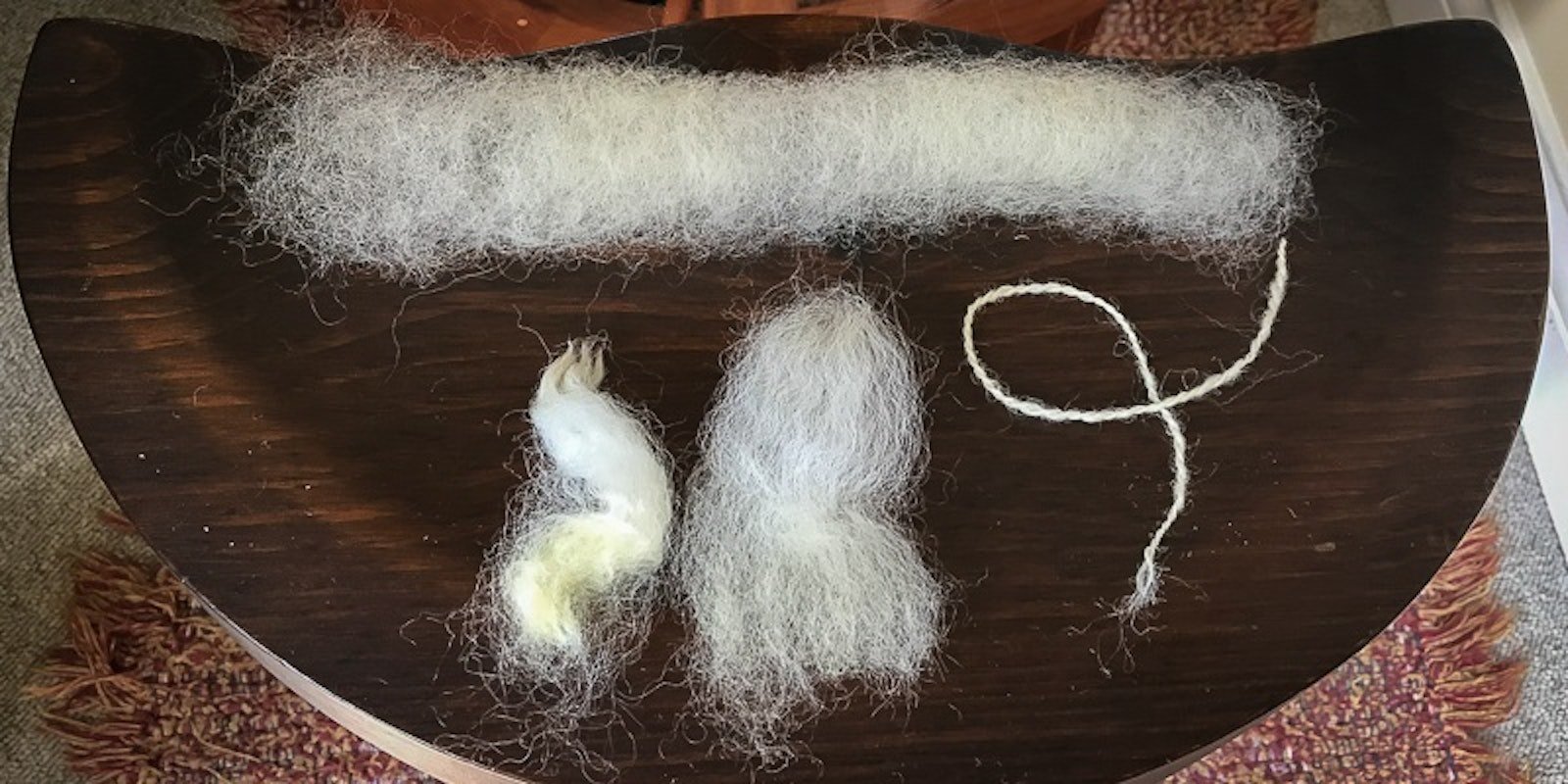Shall I introduce you to my new best friend, Llanwenog? Fleeces are like friends: some we know well and can’t live without, while others are more like casual acquaintances. I’ve been hanging out with a Llanwenog fleece and we’ve hit it off! Let me tell you a bit about this Welsh breed.
First of all, how does one pronounce “Llanwenog?” Welsh words beginning with LL can be tricky. Phonetically, it is often written in English as “cleh.” But it’s more helpful to hear how the double "l" sounds in Welsh.
At the end of the nineteenth century, Shropshire sheep were crossed with flocks of Welsh hill sheep to create crossbred lambs. Shropshire was a popular Down breed used in many flocks to improve both wool and meat. By the late 1950s, these crossbreds were officially named Llanwenog after a parish in western Wales. You can read more about how politics and economics shaped these sheep on the Llanwenog Sheep Society website.
 Sturdy yet supple, the Llanwenog fiber is a dream to process.
Sturdy yet supple, the Llanwenog fiber is a dream to process.
My friend Lynne Rule of Healing Fibers sent me a lovely Llanwenog fleece that she had purchased from Liz Wookey in Llanwrda, Wales. I found that it washed up easily into a glistening, creamy white. The British Wool Board states that Llanwenog fleece is 31.5–34 micron (the same range as Romney), so it is a sturdy wool, but also feels supple in the hand. It flicks, cards, and combs like a dream.
So, what to make? I think this Llanwenog fleece will be fabulous for bandweaving. When I look for fibers to use for bands such as warp-faced inkle and pick-up techniques, I try to find wools that have low elasticity (crimp), are sturdy, and yet retain some loft. The skeins I am working on will also take a trip through a madder dyepot. Stay tuned for next week’s results!
Learn more about dyeing with madder in the Spin Off Library or in the Spring 2020 issue of Spin Off. Or check out Natural Dyeing with Dagmar Klos and Overdyeing with Natural Dyes for even more on working with natural dyes.
Kate Larson, editor of Spin Off, teaches handspinning around the country and spends as many hours as life allows in the barn with her beloved flock of Border Leicesters.
Originally published October 17, 2017; updated October 9, 2023.

